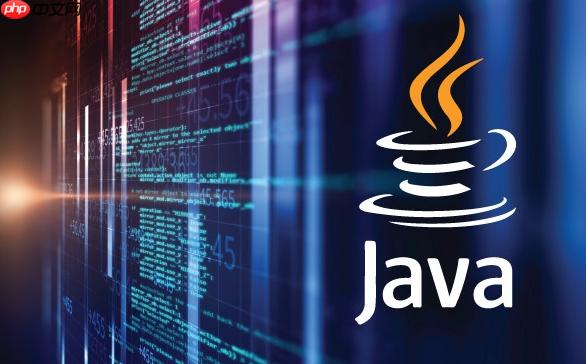使用Callable+Future可捕获任务异常,重写afterExecute实现全局监控,通过ThreadFactory设置UncaughtExceptionHandler防止异常丢失,封装Runnable实现灵活处理。

在Java中使用线程池时,异常处理容易被忽略,导致异常“静默”消失,难以排查问题。要正确捕获并处理线程池中的异常,需要理解任务类型(Runnable 或 Callable)以及线程池的执行方式。
Runnable 的 run 方法不抛出检查异常,一旦发生异常会直接终止任务且不会传递出来。而 Callable 可以通过返回 Future 对象来获取执行结果或异常。
建议:优先使用 Callable,便于通过 Future.get() 捕获异常。示例:
<pre class="brush:php;toolbar:false;">ExecutorService executor = Executors.newSingleThreadExecutor();
Future<String> future = executor.submit(() -> {
throw new RuntimeException("任务执行失败");
});
try {
String result = future.get(); // 此处会抛出 ExecutionException
} catch (ExecutionException e) {
Throwable cause = e.getCause(); // 获取原始异常
System.out.println("捕获异常:" + cause.getMessage());
} catch (InterruptedException e) {
Thread.currentThread().interrupt();
}
executor.shutdown();
ThreadPoolExecutor 提供了钩子方法 afterExecute,在任务执行完成后调用,可用于统一捕获未处理的异常。
立即学习“Java免费学习笔记(深入)”;
说明:该方法在任务正常结束或抛出异常后都会执行,可以结合 Thread.currentThread().getUncaughtExceptionHandler 判断异常情况。
示例:
<pre class="brush:php;toolbar:false;">ThreadPoolExecutor executor = new ThreadPoolExecutor(
2, 4, 60L, TimeUnit.SECONDS, new LinkedBlockingQueue<>()
) {
@Override
protected void afterExecute(Runnable r, Throwable t) {
super.afterExecute(r, t);
if (t != null) {
System.err.println("捕获线程池任务异常:" + t);
} else if (r instanceof Future) {
try {
((Future<?>) r).get();
} catch (CancellationException ce) {
t = ce;
} catch (ExecutionException ee) {
t = ee.getCause();
} catch (InterruptedException ie) {
Thread.currentThread().interrupt();
}
if (t != null) {
System.err.println("通过 Future 捕获异常:" + t.getMessage());
}
}
}
};
可以通过 ThreadFactory 设置每个线程的 UncaughtExceptionHandler,用于处理未被捕获的运行时异常。
说明:此方法适用于 Runnable 任务中发生的异常,无法通过返回值感知的情况。
示例:
<pre class="brush:php;toolbar:false;">ThreadFactory factory = r -> {
Thread t = new Thread(r);
t.setUncaughtExceptionHandler((thread, exception) ->
System.err.println("线程 " + thread.getName() + " 发生异常:" + exception.getMessage())
);
return t;
};
ExecutorService executor = Executors.newFixedThreadPool(2, factory);
executor.submit(() -> {
throw new RuntimeException("模拟运行时异常");
});
在提交任务前手动包装 Runnable,添加 try-catch 块,实现细粒度控制。
优点:灵活,可针对不同任务定制处理策略。
示例:
<pre class="brush:php;toolbar:false;">public class ExceptionHandlingRunnable implements Runnable {
private final Runnable task;
public ExceptionHandlingRunnable(Runnable task) {
this.task = task;
}
@Override
public void run() {
try {
task.run();
} catch (Exception e) {
System.err.println("任务中捕获异常:" + e.getMessage());
// 可记录日志、通知监控系统等
}
}
}
// 使用
executor.submit(new ExceptionHandlingRunnable(() -> {
throw new RuntimeException("测试异常");
}));
基本上就这些。关键是根据任务类型选择合适的异常捕获方式:Callable + Future 最直观,afterExecute 适合全局监控,UncaughtExceptionHandler 防止异常丢失,封装 Runnable 则更灵活可控。
以上就是如何在Java中捕获并处理线程池中的异常的详细内容,更多请关注php中文网其它相关文章!

每个人都需要一台速度更快、更稳定的 PC。随着时间的推移,垃圾文件、旧注册表数据和不必要的后台进程会占用资源并降低性能。幸运的是,许多工具可以让 Windows 保持平稳运行。

Copyright 2014-2025 https://www.php.cn/ All Rights Reserved | php.cn | 湘ICP备2023035733号